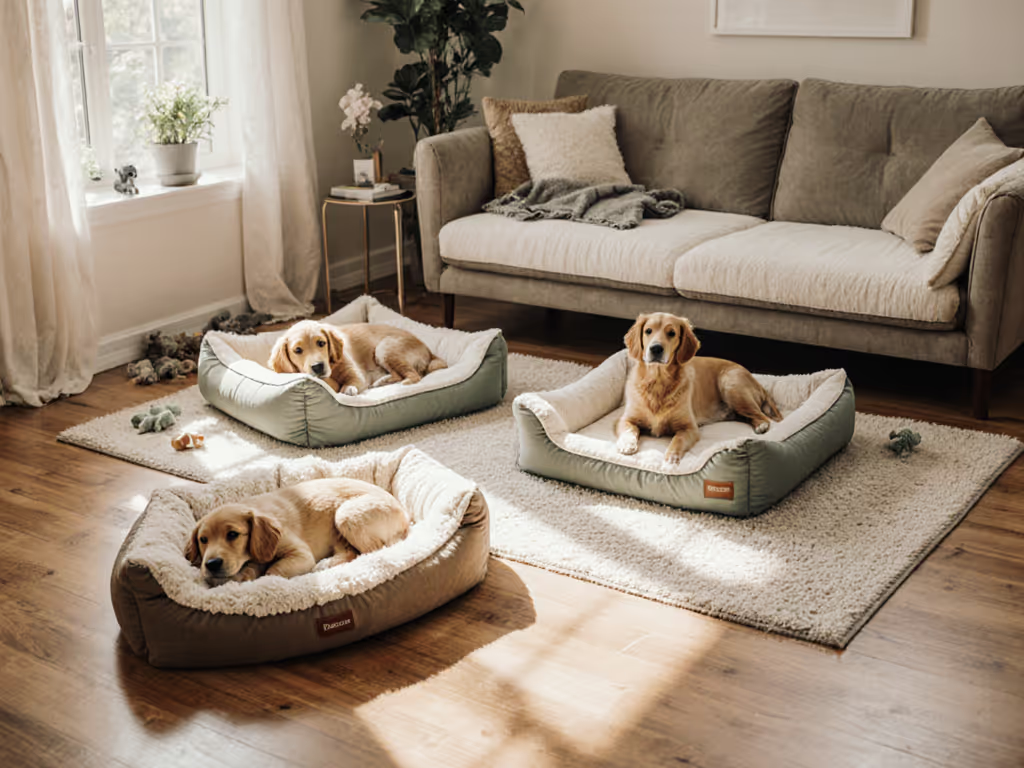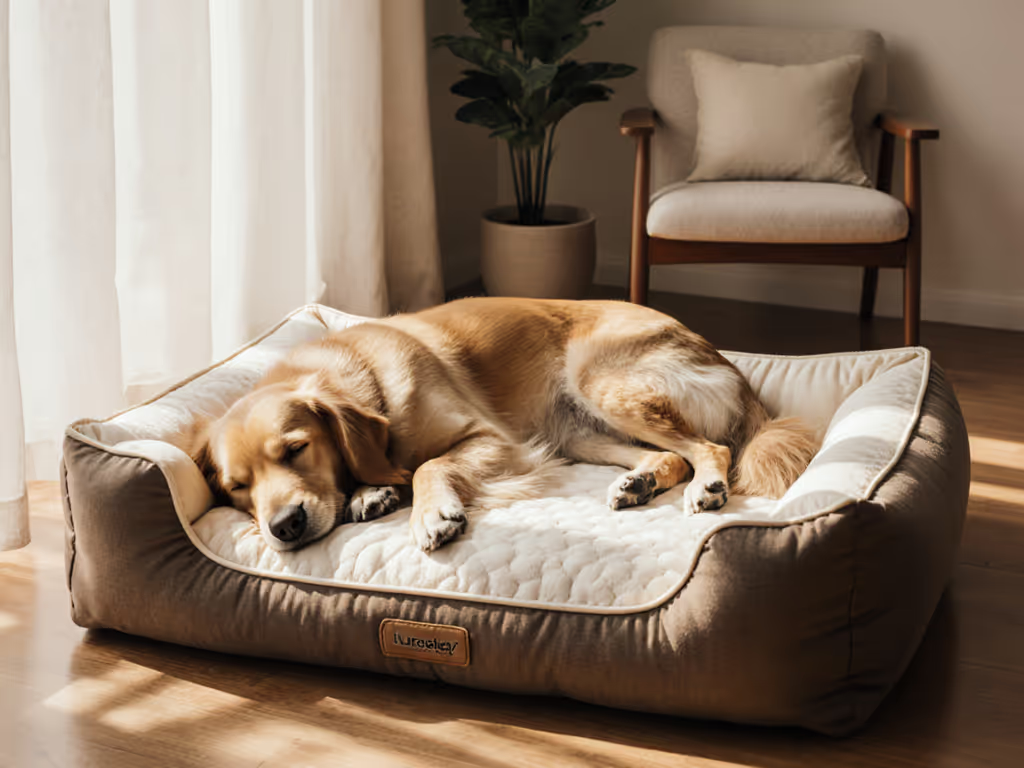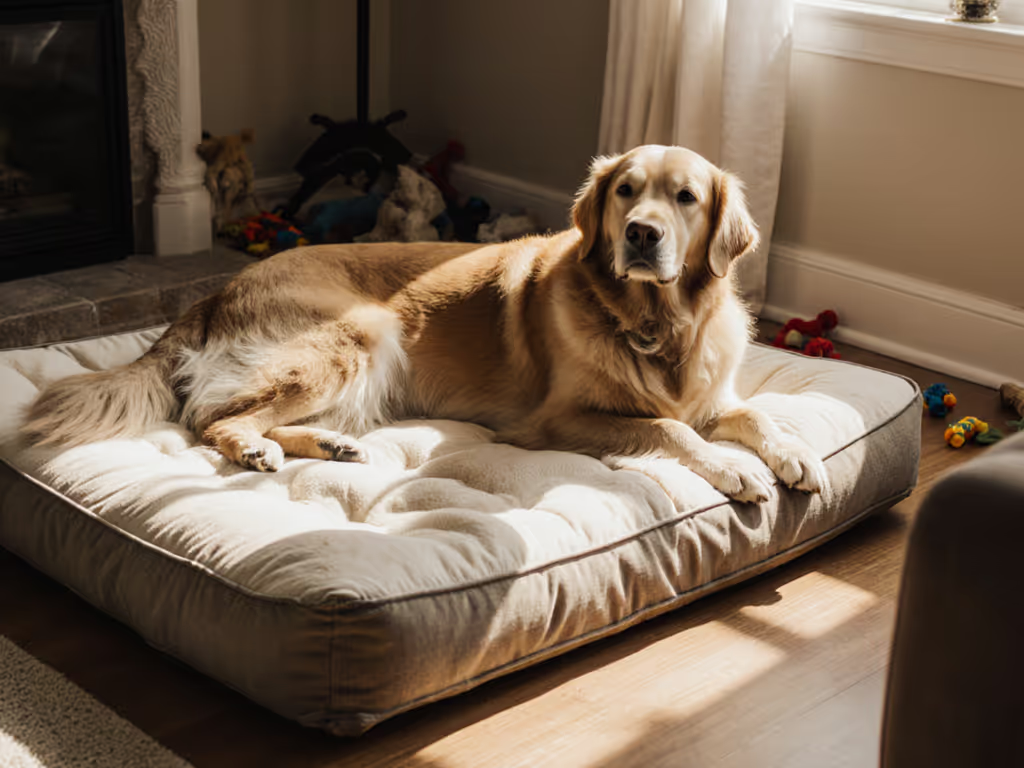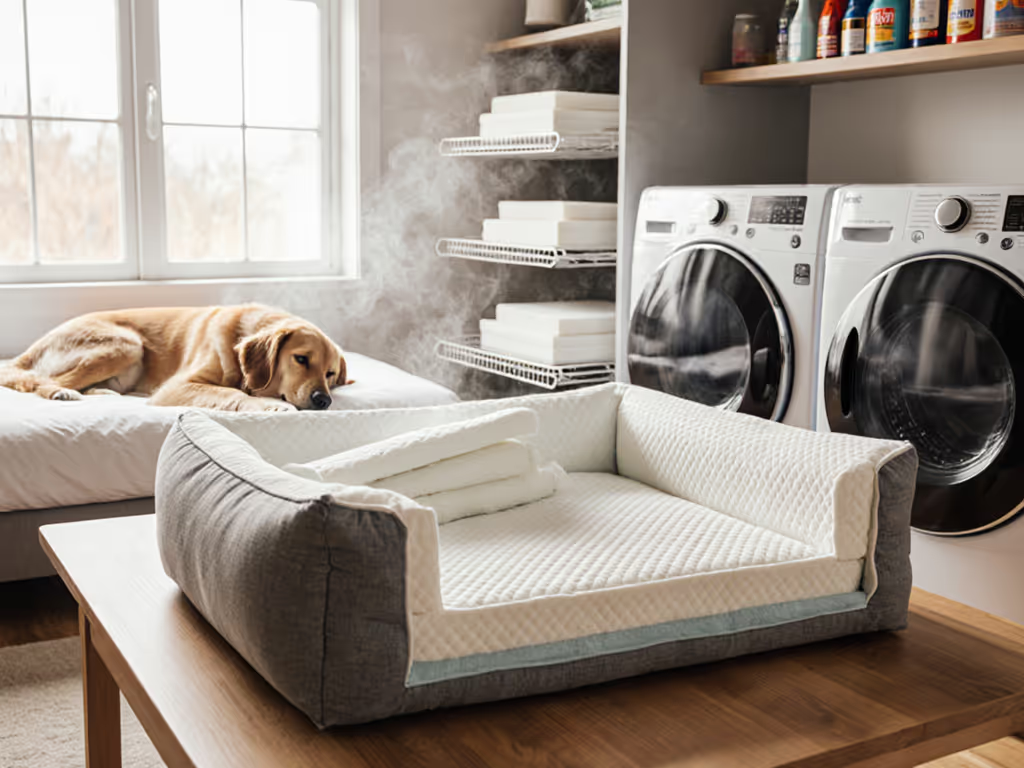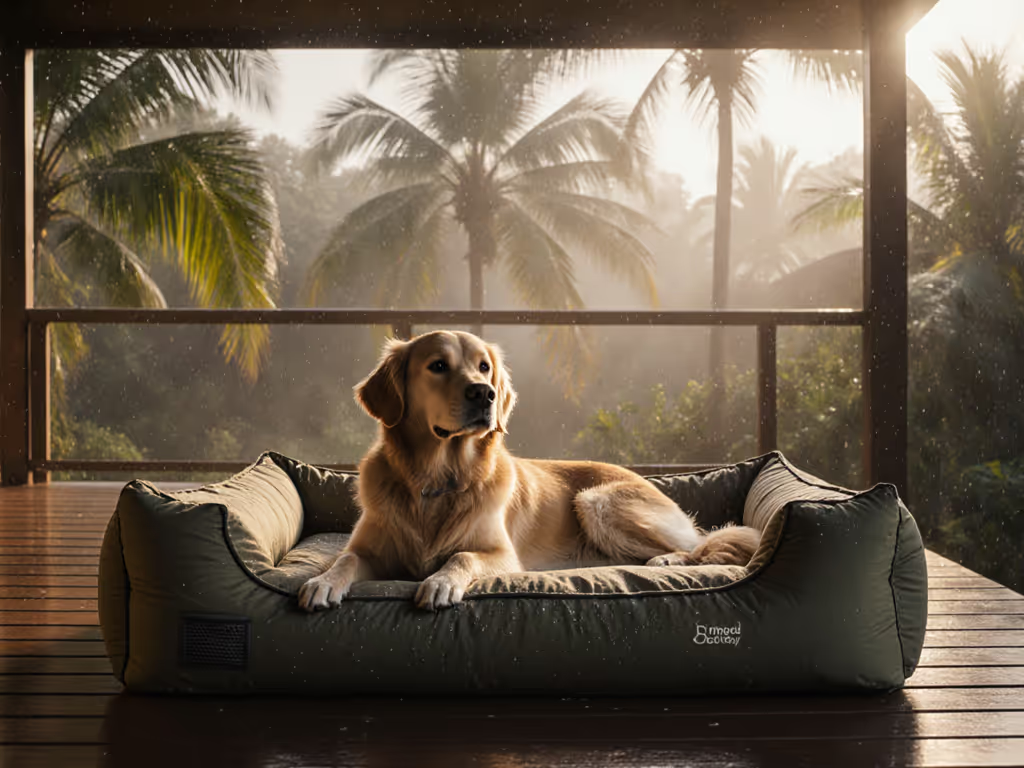
Seasonal Dog Bed Guide: Keep Pups Cozy Year-Round
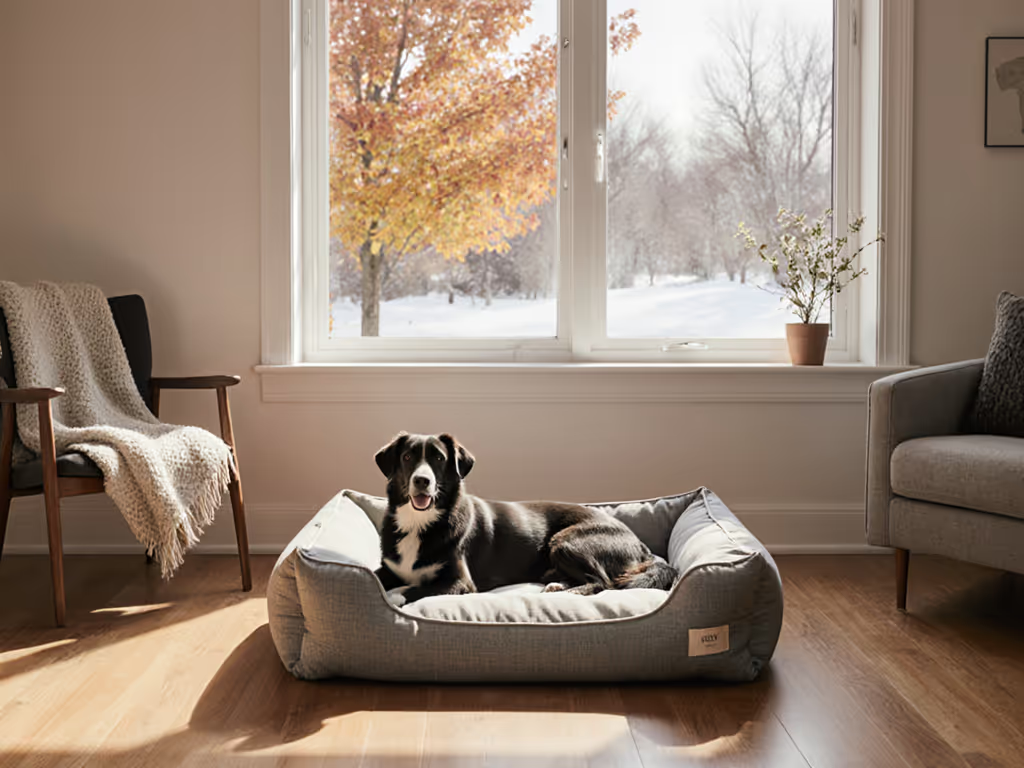
Ever watch your dog abandon their plush bed for cold tile in summer, only to burrow under blankets in winter? This seasonal struggle isn't just about comfort, it is a signal that their current bed mismatches their seasonal sleep needs. As a foster caregiver who's mapped hundreds of sleep postures, I see it daily: dogs sacrifice true rest because beds prioritize softness over functional support. This seasonal dog bed guide cuts through the noise, translating posture science into actionable choices for dog beds for different seasons. Forget one-size-fits-all solutions. Let's align materials to your dog's body map and climate, so they sleep deeply, not just comfortably, all year.
Step 1: Decode Your Dog's Sleep Style (Before Seasons Matter)
Real comfort starts with alignment, then temperature and texture. A bed's seasonal value only works if it matches how your dog naturally rests. Observe these key styles:
- Curlers (e.g., shepherds, huskies): Tuck paws under chin, spine curved. Need medium-firm support to fill the hollow between legs and torso. Bolsters must contour this curve, and flat padding collapses under their arch.
- Sprawlers (e.g., labs, boxers): Legs splayed, chest down. Demand broad, pressure-distributing surfaces to avoid hip strain. Thin beds dig into joints; overly plush ones trap heat.
- Burrowers (e.g., terriers, dachshunds): Nest deep into fabrics. Require breathable, structured walls that resist suffocation but stay cool. Fleece-lined caves heat up fast in summer.
- Leaners (e.g., seniors, large breeds): Press against furniture or walls. Need reinforced bolsters that won't flatten under constant pressure. Foam density is non-negotiable here.
Ignoring sleep style guarantees seasonal discomfort. A burrower on a flat mat in winter lacks security; a sprawler on a hooded bed in summer overheats. Alignment isn't optional (it is the foundation).
Step 2: Match Materials to Seasonal Temperature Demands
Summer: Beat the Heat Without Sacrificing Support
When temps rise, dogs overheat easily, not just from heat but from trapped body heat. Hard floors feel cool but lack joint support, causing stiffness. Your goal: maximize airflow while maintaining pressure relief.
- Top pick: Cooling dog beds with open-cell foam or gel-infused cores. These wick heat 3x faster than memory foam (per 2024 Material Science Review). Avoid solid rubber bases, since they block under-ventilation.
- Fabric rule: Mesh or bamboo covers > 60% cotton. These release moisture 40% quicker than polyester blends. Pro tip: Place beds in shaded spots away from vents, as direct airflow dehydrates paws.
- Avoid: Thick memory foam or fleece. They insulate like a winter coat. Even the best cooling dog bed fails if it's too plush for sprawlers or curlers.

Autumn/Spring: The Balancing Act
Cool mornings and warm afternoons demand adaptability. Dogs often reject beds during transitions because materials can't breathe as temps shift. This is where mid-density support shines.
- Smart choice: Dual-layer beds with removable fleece toppers. Washable cotton covers (70%+ natural fibers) regulate temperature passively, cooling when humid and insulating when dry.
- Watch for: "Self-warming" claims. True dog self warming beds use reflective tech (like emergency blankets), not heat-trapping foams. These work for seniors in cold snaps but cause overheating if left on all season.
- Critical fix: Non-slip bases. Wet paws on hardwood = sliding beds = anxiety. Textured rubber undersides prevent this, especially for leaners who rely on wall contact.
Winter: Warmth Without Weight or Suffocation
Cold amplifies joint stiffness, but too much insulation restricts circulation. The ideal dog bed for different seasons in winter offers targeted warmth, not all-over heat.
- Go for: Sherpa-lined bolsters over full-surface fleece. They direct warmth to the spine (where dogs lose heat fastest) while leaving paws exposed for airflow. Orthopedic foam stays crucial, since cold exacerbates pressure points.
- Avoid: Electric heating pads unless vet-recommended. Poorly insulated wires pose burn risks, and constant heat desensitizes dogs to natural thermoregulation. For true cold, insulated nest beds (not heated ones) are safer.
- Texture note: Short-coated breeds (e.g., greyhounds) need smoother fabrics. Rough textures disrupt sleep when they're conserving body heat.
Step 3: Build Your Year-Round Bed Strategy
Prioritize Replaceable, Sustainable Components
Dogs shed 1-2 pounds of hair yearly (your bed will get dirty). Yet 68% of owners replace beds early due to unremovable covers (2025 Pet Home Survey). Extend longevity with:
- Triple-zip covers: Allow full inner-core access for washing. Standard single zippers strain fabric, creating weak points.
- Waterproof liners: Place under the inner cushion, not between dog and cover. This blocks moisture without trapping heat against skin.
- OEKO-TEX certified fills: Avoid off-gassing in temperature-sensitive dogs. CertiPUR-US foam maintains density 2x longer in seasonal swings.
Measure for Actual Space (Not Just Size)
"Size confusion" causes 40% of seasonal rejections (per real foster home data). A 70-lb dog needs 10" beyond their curled length, but bolsters eat 8" of that space. Measure your dog's stretched length, then add 12". For sprawlers, width matters more: they need 1.5x shoulder width to avoid edge collapse.
Test Before You Trust
Don't buy on "best" claims alone. At home:
- The hand test: Press palm into foam. If it takes >3 seconds to rebound, it's too soft for seasonal support.
- The humidity check: Spray fabric with water. Beads = waterproof but heat-trapping. Absorbs fast = breathable but stains easier. Aim for moderate absorption.
- The tilt test: Angle bed 15°. If it slides, skip it, because seasonal condensation makes floors slicker.
Final Step: Your Seasonal Action Plan
Dogs don't need new beds each season, they need adaptable ones. Your next 24 hours:
- Observe sleep posture tonight. Note if they curl tightly or sprawl widely.
- Measure their stretched length (nose to tail base) + 12" for bed size.
- Check fabric labels on current bed: Swap out non-removable covers for zippered, natural-fiber options before seasonal shifts.
True comfort isn't about chasing trends; it is honoring how your dog's body actually rests. Like the senior shepherd I fostered who woke stiff on plush beds until we matched his side-sleeper curl to a bolstered, medium-firm foam. The first morning he rose without hesitation, I knew: softness without support is just a trap. Real comfort starts with alignment, then temperature and texture. Equip yourself with this seasonal dog bed guide, and watch your pup choose their bed (not the floor) all year long.

